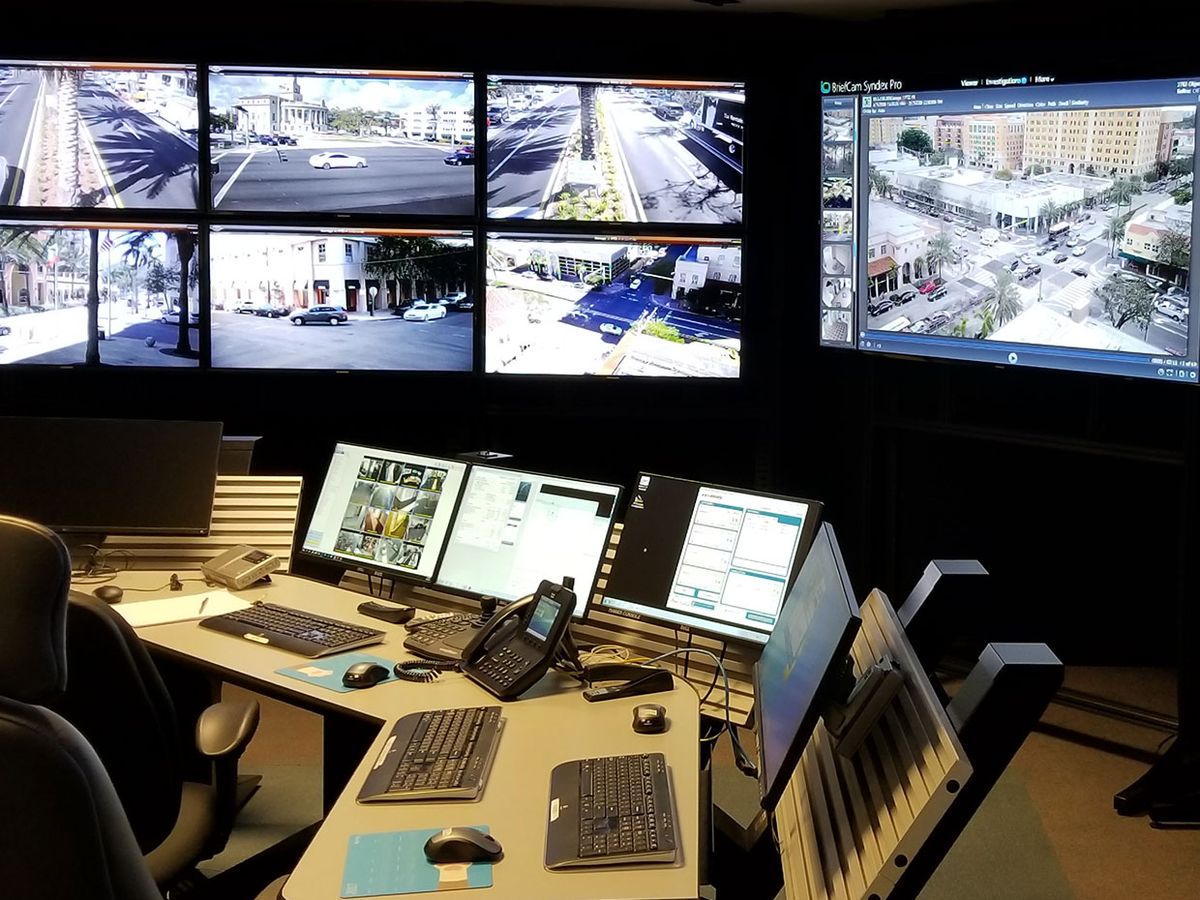THE INSTITUTECoral Gables, located just outside Miami, calls itself The City Beautiful. And it’s no wonder. The city boasts tropical tree–lined streets, sparkling beaches, and Mediterranean architecture. But it’s also becoming known for something else: a smart-city success story.
One of the first planned communities in the country, Coral Gables recently unveiled its Smart City Hub. The open-data platform—which uses a combination of analytics, apps, sensors, and other technologies—provides citizens with a wealth of information and services. They can access public police records, renew a parking permit, find electric-vehicle charging stations, and report a pothole using their mobile device.
Internet of Things sensors and smart lights located along the city’s popular Miracle Mile and other streets report real-time pedestrian counts, vehicle traffic, and environmental data. The city this year plans to add more smart lights, closed-circuit TV cameras, and sensors in neighborhoods and parks and along waterways.
IEEE Senior Member Raimundo Rodulfo, the city’s information technology director, has been overseeing the project. He talks about his work in a webinar for the IEEE Smart Cities Initiative.
Here, Rodulfo talks to The Institute about the technologies he uses, the challenges he has faced, and the types of engineers smart cities need.
OUT WITH THE OLD
Coral Gables’ transition to a smart city began in 2016, when the municipality started to replace manual processes and legacy computer systems with enterprise operating systems (EOS), Rodulfo says. An enterprise server contains programs that collectively serve the needs of an enterprise rather than a single user, department, or specialized application.
The first one installed was a facility-management EOS. In 2017 the systems used by the Parks and Recreation Department and Community Services were replaced. Last year the city began installing electronic-permitting systems. This year networks used by the Finance and Human Resources departments are on target to be upgraded.
“All these projects are having a big impact on our citizens’ quality of life and the city’s customer service,” Rodulfo says. “The smart-city platform brings together all the data from various city departments into one place that is easy to access. Residents, visitors, and businesses are also able to discover services they didn’t know we offered.”
Cloud systems, service-oriented architectures, customer relationship management systems, application program interfaces and geographic information systems are some of the other technologies used.
Using a mobile app on the Smart City Hub, a resident can take a photo of a pothole with her smartphone and upload the image, which gets routed automatically to the appropriate department. A representative can schedule the repair and update the citizen on her request’s status.
“That’s part of the automation that we are bringing with these new systems,” Rodulfo says. “The complaint goes to the right person, who takes ownership of the issue and provides improved customer service by updating the citizen directly.”
Other information available through the mobile app includes the estimated time of arrival of the city’s trolleys as well as guidance on available parking spots and their cost.
Rodulfo adds that just about any bill for city services, such as permits, leases, and business licenses, can be paid online or through the hub’s dashboard.
He’s most proud of the City Hall portal, which provides transparency on how the government operates. It provides reports on the city’s finances, spending, and improvement projects.

BECOMING A SMART-CITY EXPERT
After many years spent working for telecoms, Rodulfo was hired by Coral Gables in 2004 to develop network solutions and systems. In 2012 he was promoted to assistant chief information officer, and in 2016 he was named director of information technology.
Being an IEEE member has helped him access technical information, connect with experts, and learn from colleagues. Recording the webinar for the IEEE Smart Cities Initiative gave him an opportunity to share his work.
What types of engineers do smart cities need? Rodulfo says many types: electrical and electronics engineers and software engineers to work on the IT side of things, civil and mechanical engineers to help design smarter roads for electric vehicles, and environmental engineers to protect the land, water, and air. Experts are needed to help analyze the societal impact of technology and the effect the city’s policies have on citizens.
Many of the problems Rodulfo works to solve are technological solutions for concerns that citizens have about traffic, public safety, sustainability, and economic growth, he says.
“We listen to the citizens, pay attention to what’s causing them problems, and work with the city’s departments to help solve them,” he says. “The solutions have to be holistic and comprehensive and, most importantly, aligned with the city’s mission.”
A smart-city expert is part engineer, part urban planner, he says. “Engineering,” he notes, “has always been a great tool to find solutions to problems by looking at the big picture.”
